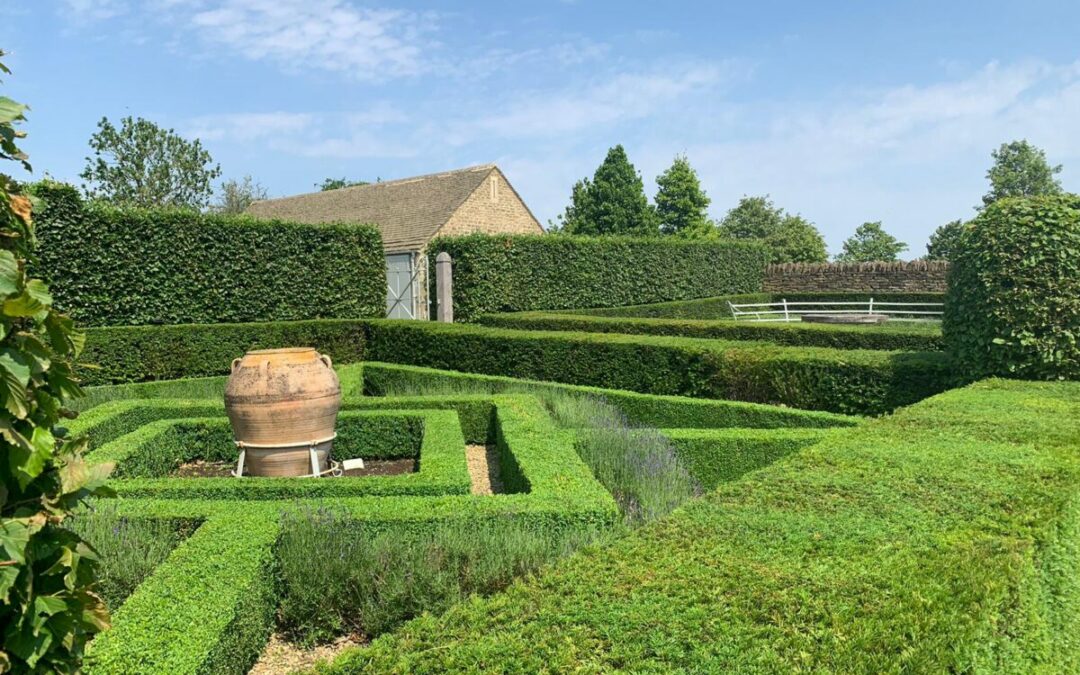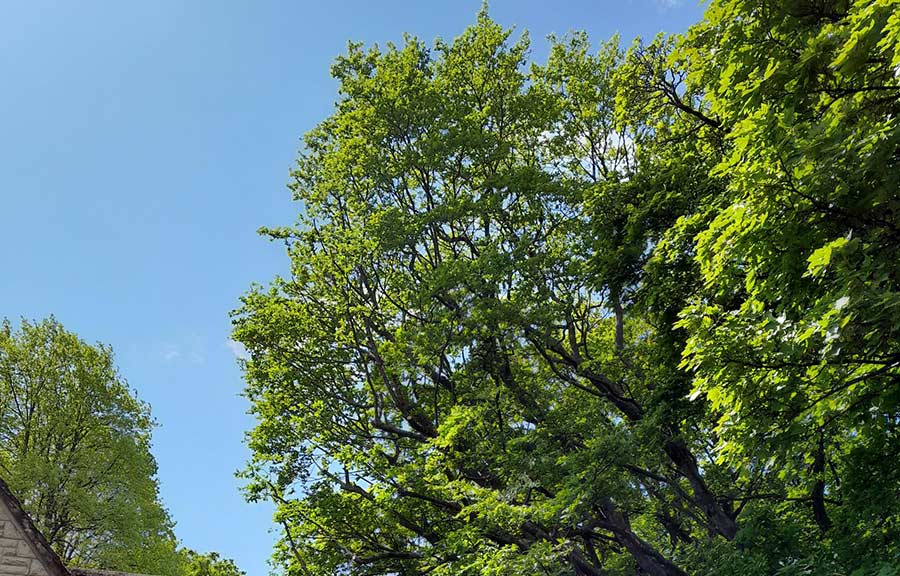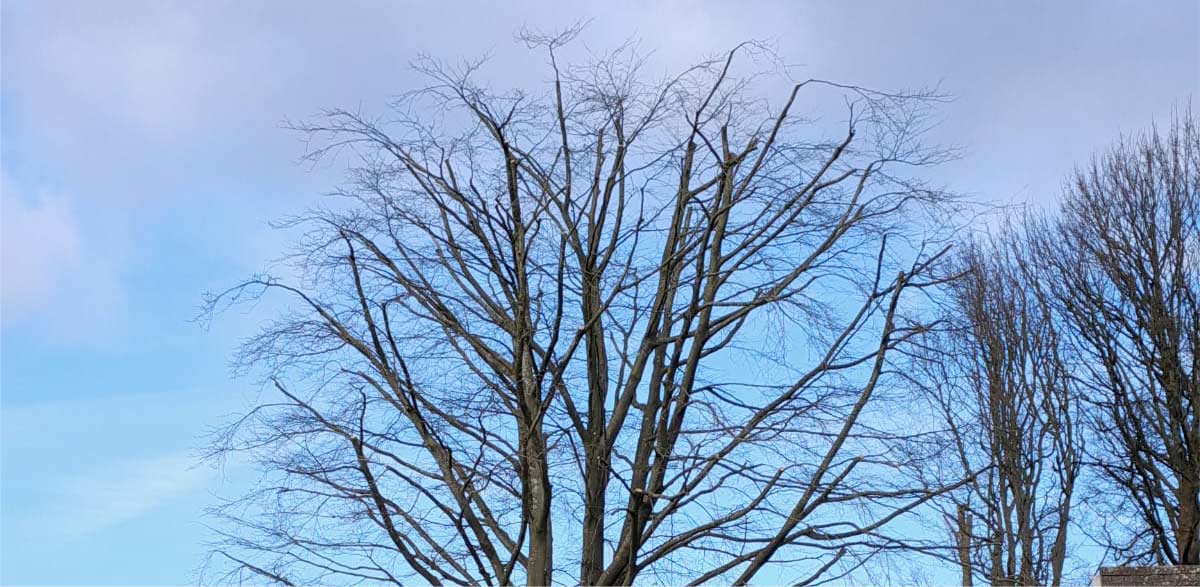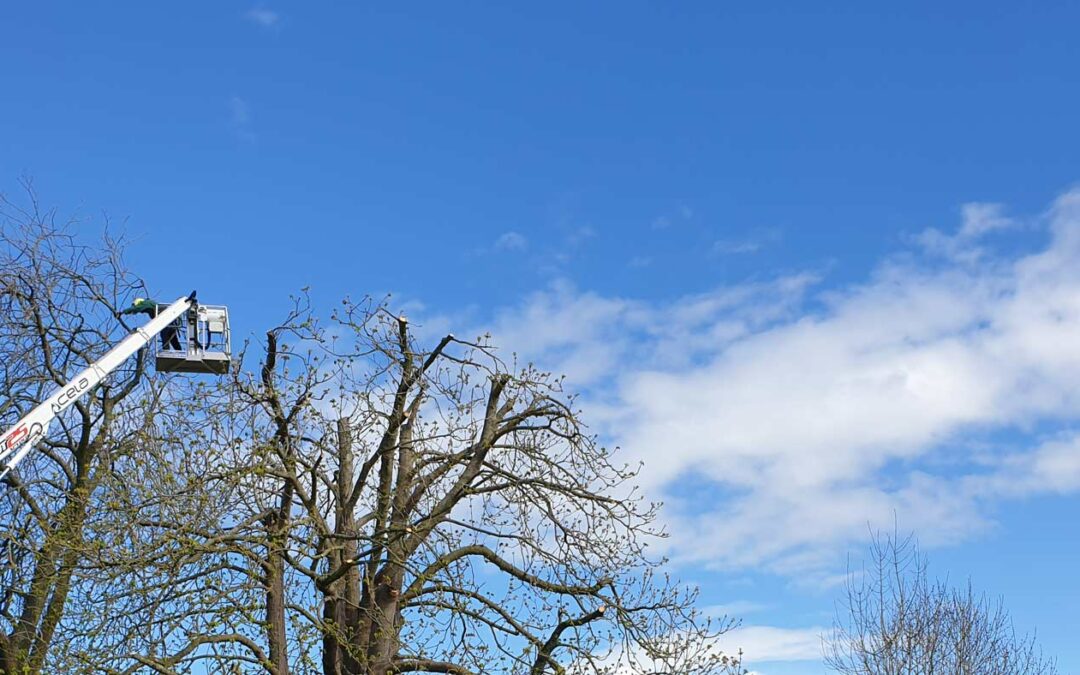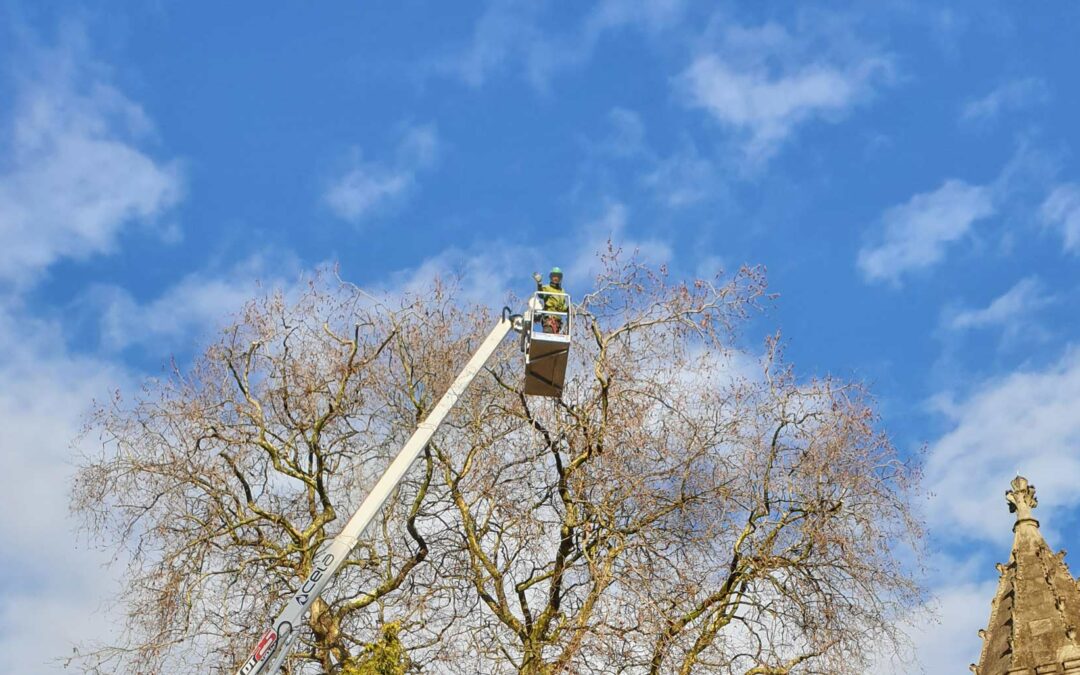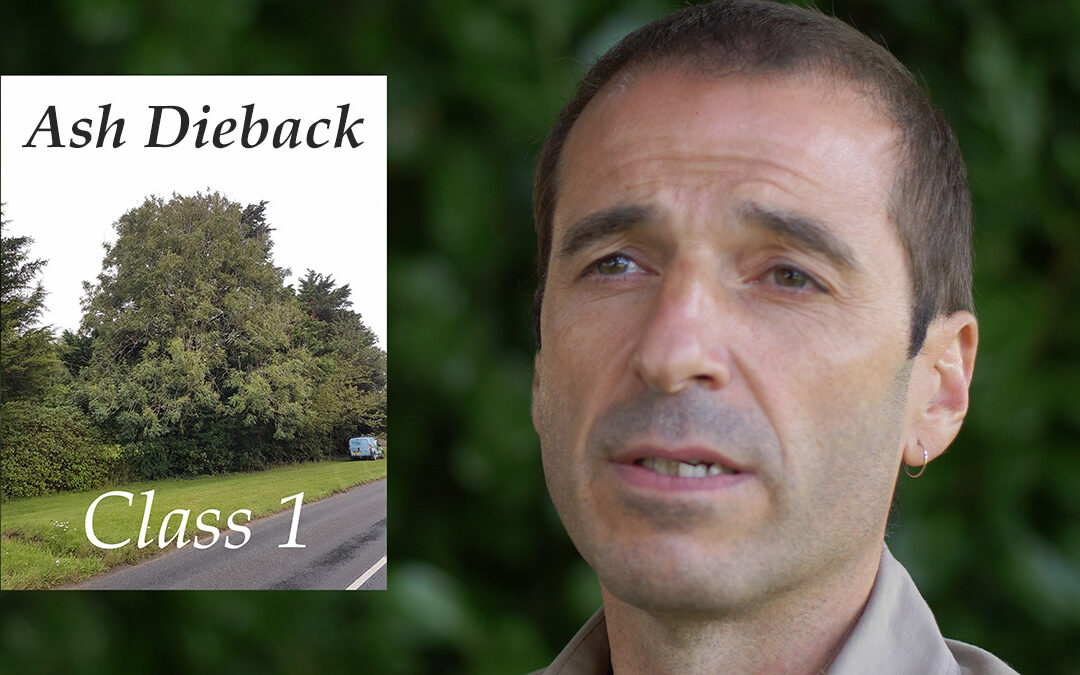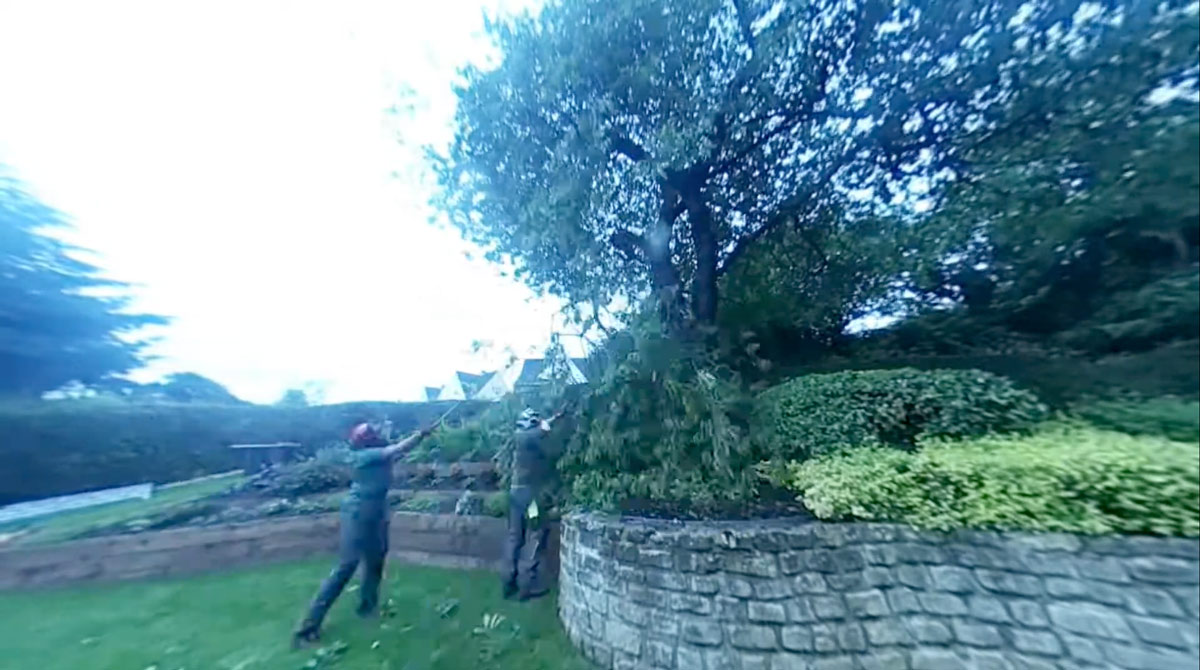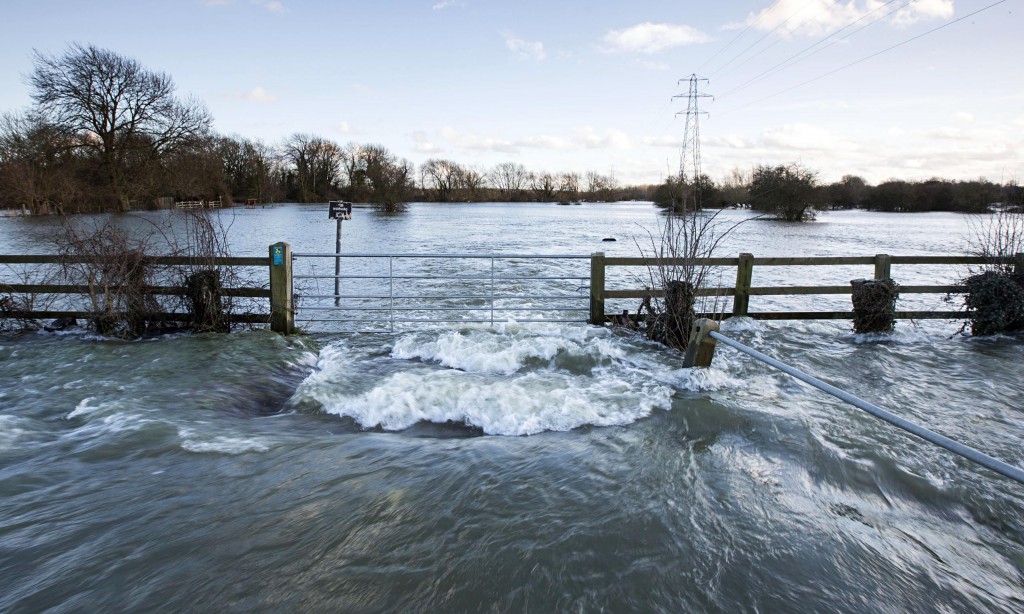Winter – the time to stay snug indoors and forget about your trees? Well, perhaps but perhaps not – for some species the correct timing of pruning or trimming work can be very important.
Apple and Pear are generally pruned in the dormant months when out of leaf, however STONE FRUIT such as Plum and Cherry are then more susceptible to Silver Leaf Disease which is often the cause of dieback and decline (of Plum in particular). There is an old saying “stone fruit hate the knife” and in fact they are better left alone (other than thinning out and deadwood removal) however if you have to prune, try to do it when Silver Leaf is least infective which is mid summer, the months of June, July and August. We collect many such jobs through the year and then do them at the optimum time.
Most Cypress-type conifers may be prone to frost damage if trimmed in the coldest weather. This applies to the ever-present Leylandii, and hard trimming at the wrong time can result in bare patches…not desirable, especially as it has the fatal flaw of not being able to regenerate well – if at all – from old wood. As a general rule we stop trimming as the weather starts to turn frosty and don’t start again until around April. By the way, bare brown patches on Leylandii can also be caused by the CYPRESS APHID which I hope to add to the blog soon. We can often treat this so phone us if you are concerned.
The same caution should be applied to Laurel and Yew, and we generally stop Yew trimming in October as young new regrowths can be susceptible to damage. We have been trimming the famous churchyard Yew trees in Painswick every September for many years, and that is perhaps the classic time to do it. Severe cutting back or rejuvenation of evergreens is generally best in the early spring, and this is especially true with Yew for which the optimum time to ensure regeneration is April – May.
Some deciduous species bleed sap from pruning wounds as they get going after the winter, however this is in fact only a major issue for a few. Walnut is the most extreme example, with sap bleeding starting as early as December, so don’t prune after November, right through to June. All Birch and Maple, including Sycamore, should not be pruned after around February, through to being more or less in full leaf ie June. Otherwise the sap can trickle out – as is of course exploited in the production of maple syrup and birch sap wine. Felling Sycamore in late winter/early spring can occasionally produce a rather nasty effect as the stump, oozing lots of sugary sap, gets colonised by slimy bacteria and moulds (memorably described by Steve as looking like cat vomit – lovely, thanks for that one Steve!). Last winter I captured this unusual shot of sap icicles following some hedge flailing of Sycamore (I should have tried a sap lolly!):

Frozen sap
Otherwise, winter is often the favoured time for getting those disruptive jobs done – why not get your felling work done then rather than in the summer when you want to sit back and enjoy the garden? Ok, maybe not that Sycamore!
Evergreen trees can hold the snow, and Cedar with its large flat plates of foliage can be notoriously prone to damage. This can sometimes be catastrophic, with one branch landing on another, ending up with the whole side of a tree disappearing in seconds. Cypress-type species, and Yew, can have branches bent out with the weight, and on a small scale you may be able to shake snow off branches to avoid this. High-snowfall conifer species such as Spruce have adapted to this with relatively short, light branches that slope down to shed the snow. The ultimate example is Serbian Spruce, Picea omorika, a dramatically narrow tree clothed with short, hanging branches. However this Cedar looked all set for damage last winter:

